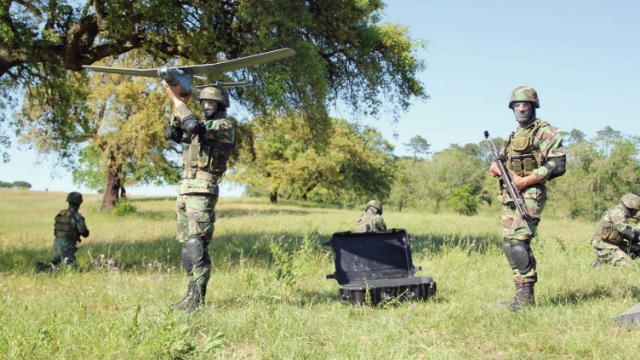Tekever, Elbit Systems, Airbus’ SURVEY Copter, AeroVironment, and Altus are competing to deliver the Portuguese Army’s first intelligence, surveillance, target acquisition, and reconnaissance (ISTAR) capability based on small unmanned aerial vehicles (UAVs).
The procurement, to run through 2021, is worth up to EUR6 million and is being executed by the NATO Support and Procurement Agency (NSPA) through an agreement with Portugal. A request for proposal (RFP) was issued on 21 December 2017 and closed on 28 February 2018. Bids are now being analysed, and a contract and initial deliveries are expected this year, the army told Jane’s . NSPA declined to elaborate on the bidders’ proposals.
Twelve systems, for a total of 36 aircraft, are to equip four sections within a surveillance systems company from an ISTAR battalion in a cavalry regiment. The aim is to gather information in support of battalion-sized units.
Each system comprises three fixed-wing, hand-launched unarmed UAVs. The UAVs are to have a three-axis gimbaled interchangeable electro-optical/infrared (EO/IR) payload (a colour EO sensor and an uncooled long-wave IR sensor); a ground-control station with day/night operable monitor, keyboard, backup data storage, rechargeable batteries, and display for near-real-time video and metadata for dissemination; and an EO/IR payload for training. They must also include GPS or Galileo navigation, and an encrypted digital datalink to deliver video and telemetry through an omni-directional antenna.
Portugal is also asking for software licences, spare parts for 300 launches, 18 video and data terminals that can operate without external power for at least 180 minutes, and other support functions.
Requirements call for a maximum take-off weight between 2 kg and 15 kg, an in-production and in-service aircraft, a maximum 10×10 m area landing, operation by a no more than two personnel, two aircraft simultaneous flight, 25–32 kt cruising speed, 90 minutes minimum autonomy, and 30 minutes positioning over a target at a maximum range of 10 km line-of-sight.
Source: Jane’s 360

